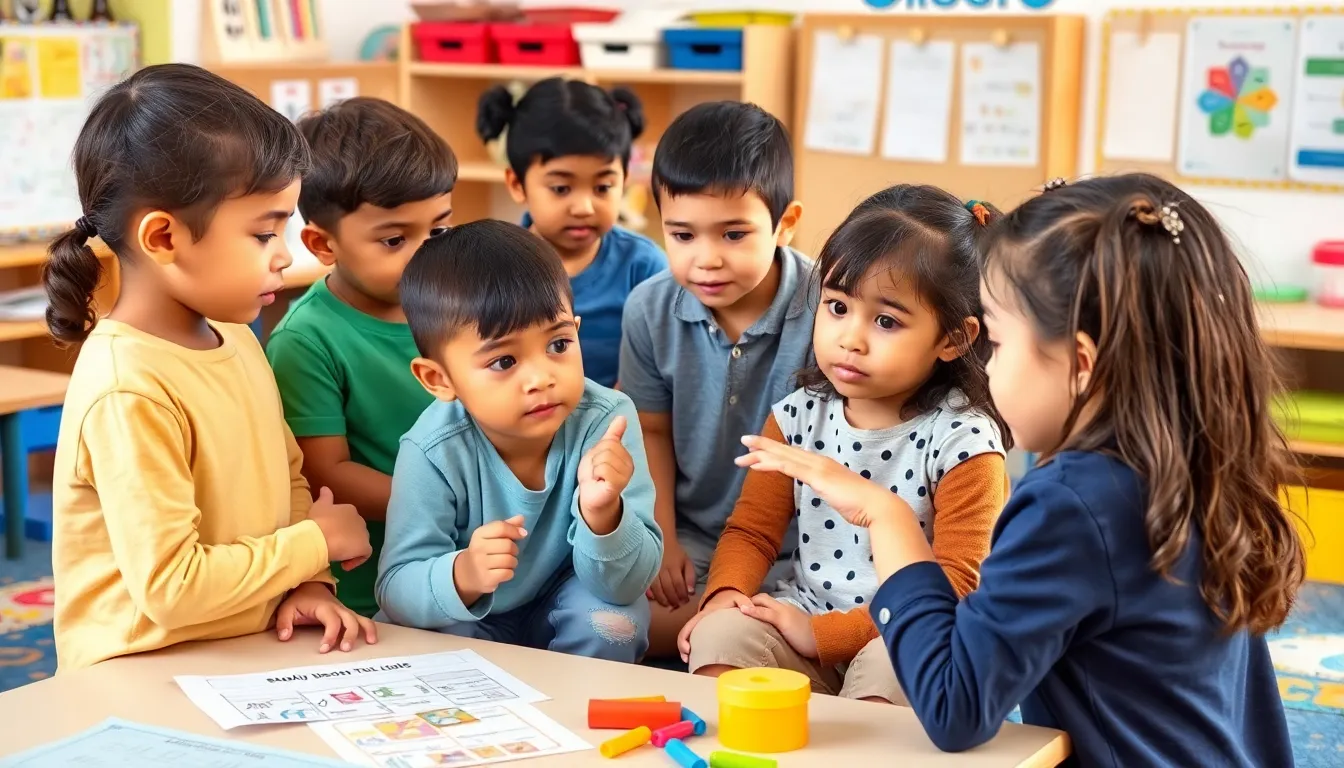Table of Contents
ToggleTeaching responsibility might sound like a chore, but it’s actually one of the most rewarding adventures a parent or teacher can embark on. Imagine a world where kids not only clean their rooms but also take charge of their own decisions—yes, it’s possible! By instilling a sense of responsibility, adults can help shape future leaders who won’t just wait for someone else to pick up the slack.
Importance of Teaching Responsibility
Teaching responsibility fosters growth in children and cultivates essential life skills. It empowers them to make decisions and face the consequences of their actions. Through responsibility, children learn accountability, which is vital in personal and professional settings.
Parents and teachers play crucial roles in guiding children toward understanding responsible behavior. By assigning age-appropriate tasks, they create opportunities for children to experience responsibility firsthand. Chores, school assignments, and extracurricular activities serve as practical avenues for children to hone their skills.
Teaching responsibility also encourages critical thinking. Children learn to evaluate situations, consider their options, and make informed choices. This skill set lays the foundation for effective problem-solving in the future.
Moreover, responsible behavior nurtures self-discipline. When children understand the significance of completing tasks, they develop routines and habits that foster success. These routines promote time management and goal-setting, both essential for navigating life’s challenges.
Social interactions benefit from responsibility as well. Being responsible helps children build trust with peers and adults. Trust enhances relationships, allowing for stronger collaboration and teamwork, promoting a sense of community.
Ultimately, teaching responsibility shapes children into proactive individuals. They grow into leaders who contribute positively to society. Cultivating responsibility provides a framework for children to thrive academically, socially, and emotionally. Even in adulthood, these foundational skills remain valuable, guiding them toward fulfilling lives.
Key Principles of Responsibility

Teaching responsibility involves foundational principles that guide children toward becoming accountable individuals. Two significant concepts are building trust and encouraging decision-making.
Building Trust and Accountability
Trust forms the basis of responsible behavior. Parents and teachers foster this trust by setting clear expectations. Clear expectations help children understand their roles in various situations. Following through with tasks enhances reliability. When children fulfill their commitments, they build self-esteem. Accountability increases as they recognize the impact of their actions on others. Creating environments where children feel safe to accept responsibility reinforces their growth. Through consistent encouragement, parents and teachers help cultivate a sense of personal integrity.
Encouraging Decision Making
Empowering children to make decisions enhances their sense of responsibility. Age-appropriate choices allow kids to assess options and consequences. Initially, presenting simple choices—such as selecting a snack—can engage them in the process. With guidance, they learn to weigh pros and cons. Effective decision-making builds critical thinking skills crucial for future challenges. Mistakes become valuable lessons when children reflect on outcomes. Consistent practice in decision-making fosters independence. This independence supports their development into proactive members of society.
Strategies for Teaching Responsibility
Teaching responsibility involves various strategies that support children’s growth into accountable individuals. These methods include role modeling, setting clear expectations, and providing opportunities for responsibility.
Role Modeling
Children observe and imitate behavior exhibited by adults. Demonstrating responsible actions in daily life sets a standard for them to follow. Actions such as meeting deadlines and fulfilling commitments exemplify accountability. Sharing stories of personal experiences also encourages understanding. When parents and teachers discuss their own decision-making processes, it helps children grasp the importance of responsibility. Observing these modeled behaviors cultivates a mindset focused on accountability.
Setting Clear Expectations
Establishing clear expectations helps children understand their responsibilities. Communicating specific tasks or standards leads to greater reliability. Adults can outline household chores, school assignments, and personal goals to provide guidance. Checklist systems or visual aids strengthen comprehension of duties. When children know what’s expected, they are more likely to take ownership of their actions. Delivering consistent feedback on their performance also reinforces understanding and accountability. Clear communication creates an environment conducive to responsible behavior.
Providing Opportunities for Responsibility
Offering children opportunities to take on responsibilities fosters independence. Adults might assign age-appropriate tasks, such as pet care or simple household chores. These responsibilities create chances for children to develop problem-solving skills. Creating a safe space for trial and error encourages children to learn from mistakes. Engaging in teamwork activities aids collaboration and reliance on peers. Allowing children to contribute in meaningful ways prepares them for future leadership roles. Each opportunity enhances their understanding of accountability in various contexts.
Challenges in Teaching Responsibility
Teaching responsibility presents several challenges that require careful navigation. These obstacles include overcoming resistance and effectively addressing mistakes and consequences.
Overcoming Resistance
Resistance from children often arises when they perceive tasks as burdensome. Engaging them in conversations about the importance of responsibility can mitigate this reluctance. Offering choices empowers children and helps them feel in control. Demonstrating the benefits of responsible behavior through real-life examples also reinforces its value. Finding the right balance between guidance and independence promotes acceptance of responsibilities. Consistent encouragement aids in fostering a positive attitude towards taking on tasks. By addressing concerns and providing support, adults can transform resistance into eagerness for responsibility.
Addressing Mistakes and Consequences
Mistakes provide critical learning opportunities. Effectively addressing these errors helps children understand the repercussions of their actions. Discussing what went wrong and exploring alternative solutions encourages accountability. It becomes essential for adults to create a supportive environment where mistakes are viewed constructively. Encouraging children to reflect on their choices fosters critical thinking and self-awareness. Clear expectations should outline both expected behaviors and potential consequences. Recognition of positive outcomes reinforces responsible actions, while mistakes teach invaluable lessons, ultimately shaping their character and decision-making skills.
Teaching responsibility is a vital step in nurturing well-rounded individuals. By instilling a sense of accountability from a young age, parents and teachers pave the way for children to thrive in various aspects of life. As these children learn to make decisions and understand the consequences, they develop essential skills that will serve them throughout their lives.
The journey of teaching responsibility not only shapes character but also fosters independence and critical thinking. By providing opportunities for growth and encouraging a supportive environment, adults can help children embrace their roles in the community. Ultimately, cultivating responsibility equips the next generation with the tools they need to become proactive leaders and engaged citizens.







